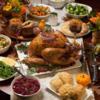Restaurants Mislabel Products as Gluten-Free
This study says that restaurants routinely mislabel products as gluten-free. What does this mean for celiac patients?

Do restaurants falsely advertise “gluten-free” products on their menus? This study in Australia says that they do. Maybe not intentionally, but there are many products on menus that claim they are gluten-free, when they are really unsafe for those who have celiac disease.
Apex Tribune, a newspaper out of Australia, reported that a recent investigation proved nine out of 14 eateries studied used gluten in their gluten-free products. These restaurants mislabeled foods that included chicken risotto, roasted vegetable salads, and chicken burgers.
This mislabeling habit could prove deadly to those with celiac disease or intolerant to gluten. Dr. Jason Tye-Din, who headed this study at the Walter and Eliza Hall Institute of Medical Research, reported that even one-100th of a slice of bread, or just a few crumbs of gluten-containing foods, could cause severe reactions.
Further studies in Melbourne restaurants found that gluten-free foods contained levels of gluten that were dangerous. In random samplings of gluten-free dishes from 127 restaurants in the city, investigators found that 9% contained gluten. These dishes did not comply with the Food Standards Australia New Zealand's definition of gluten-free.
The problem is those who eat foods containing gluten may experience severe reactions, like diarrhea and stomach pain. It's also possible to have no obvious symptoms. However, eating gluten places celiac patients at risk of irrevocably damaging their small intestines.
Dr. Jason Tye-Din’s research discovered that some restaurant staff members were not aware of what grains contained gluten. “Lots of staff believed that spelt was gluten free for example, and maybe this is because it is often promoted as an alternative to wheat,” Tye-Din said. “But it is not safe for people with coeliac disease.”
He also discovered restaurants and workers had little knowledge of the Food Standards Australia New Zealand's requirement. And approximately 10% of staff were aware of what gluten was.
Dr. Tye-Din goes on to say, “Some customers are now starting to specify to waitstaff they have coeliac disease because they feel as though they might be lumped into those who follow a gluten-free diet less strictly. But they shouldn’t have to specify, and it shouldn’t matter why someone is gluten-free. If a restaurant says something is gluten-free, then it should be.”
Dr. Tye-Din undertook the study when he discovered that many of his patients, who were on strict gluten-free diets, were not getting any better. Perhaps, these patients should avoid eating out, but that would not solve the problem. Dr. Tye-Din recognized that education on what gluten-free means and how to serve safe foods was needed.
Right now, a city of Melbourne councilor, Beverley Pinders, explained the council was collaborating with restaurants that failed to meet requirements in order to educate them better, properly train their staff, and investigate their suppliers. The entire supply chain needs to be better aware of what gluten-free standards are.
Pinder states, “We want everyone who visits a food business across the city of Melbourne to feel safe and to know that if something says it’s gluten-free, it actually is.”
Celiac disease affects 1 in 170 people worldwide
Worldwide, celiac disease affects about 1 in 170 people. Rates do vary between different parts of the world. Some studies estimate that as many as 1 in 40 people suffers from the disease. In Australia, the statistics are 1 in 70 and in the United States, it is believed to affect 1 in 105 people. However, studies could be far off the mark. Almost 85% of those who have celiac disease remain undiagnosed.
Celiac disease is about 1 percent of the population. It seems to be most common among Caucasians, however, with the changing diets worldwide, celiac disease can be diagnosed in other ethnic groups.
Celiac disease is an autoimmune disease that carries with it the risk of cancer, liver disease, infertility, and miscarriage. Untreated, celiac disease can cause malnutrition, loss of calcium and bone density, lactose intolerance, and neurological problems.
Researchers know that the disease is a reaction with gluten, a protein found in wheat, barley, and rye. Celiac disease may also be a genetically predisposed condition. However, evidence indicates that there are environmental as well as lifestyle factors.
Celiac disease comes from interactions between eating foods with gluten, genes, plus environmental factors, but the exact cause isn’t completely known. Feeding practices, gastrointestinal infections, and gut bacteria may also contribute to celiac disease.
There are times when celiac disease becomes active after a surgery, pregnancy, or severe emotional stress.
You must see a doctor when you feel discomfort for more than two weeks
If you or your child has diarrhea or stomach discomfort that lasts for more than two weeks, take you and your child in for testing. If your child is irritable, failing to grow or has a potbelly and foul-smelling stools, they need to be checked out.
Before starting on a gluten-free diet, check with your doctor. If you reduce or stop the amount of gluten you usually eat before you are tested for celiac disease, the test results will not be conclusive.
Unfortunately, as many as 30% of those with celiac disease are not able to maintain a good response to a gluten-free diet. A disorder named nonresponsive celiac disease becomes the diagnosis. It occurs because you unknowingly eat foods containing trace amounts of gluten. Nonresponsive celiac disease can be caused by cross-contamination, eating out and not watching for gluten-free products.
Continue to follow up with your doctor even after you adopt a gluten-free diet. If you continue to have symptoms despite your gluten-free diet for up to one year, you may need further testing.














